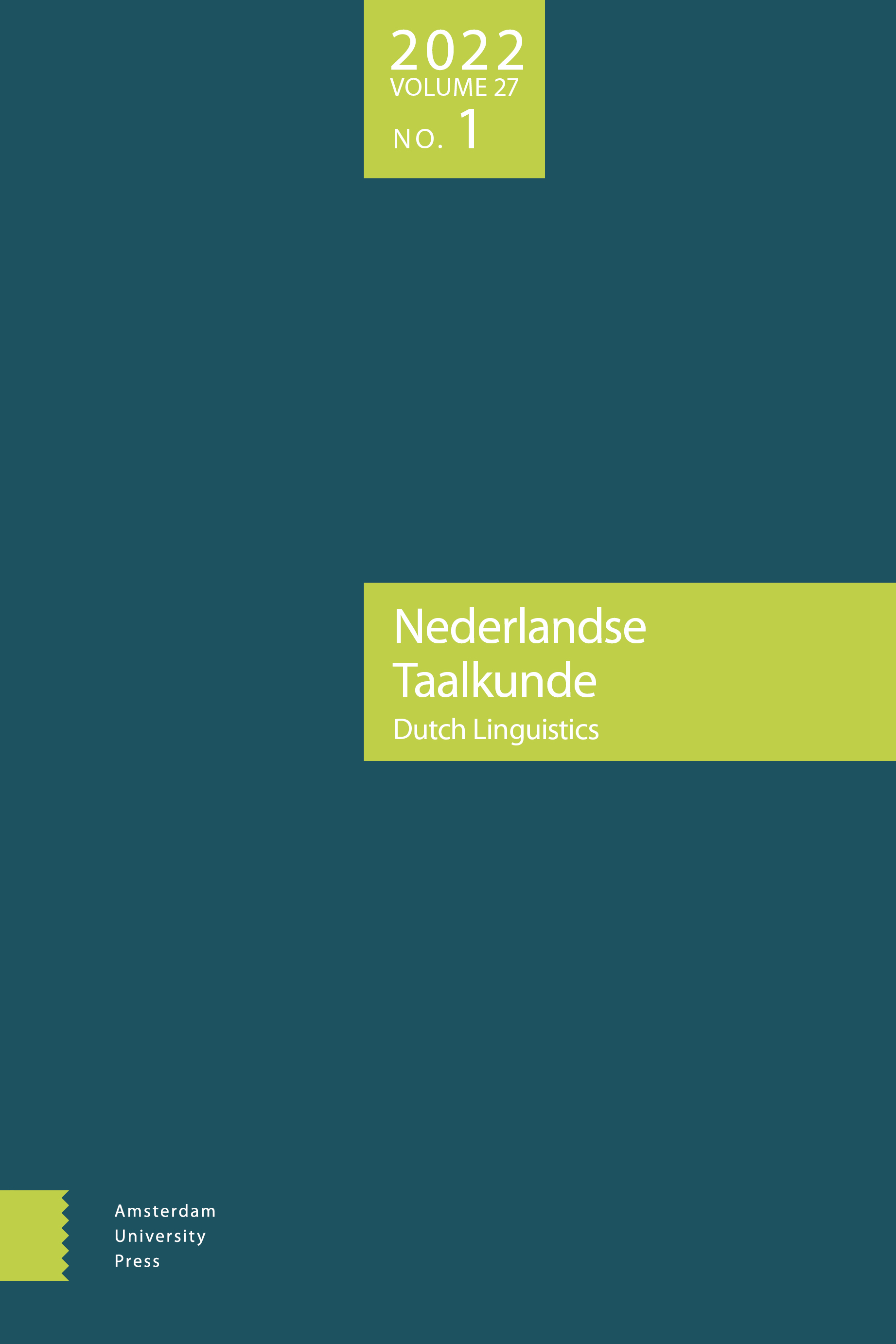-
oa Main clause external constituents and the derivation of subject-initial verb second
- Amsterdam University Press
- Source: Nederlandse Taalkunde, Volume 23, Issue 1, Mar 2018, p. 23 - 55
Abstract
This paper discusses V3-patterns with a sentence-initial adverbial clause in Standard Dutch (StD) and West-Flemish (WF), which appear to violate the V2 restriction which normally regulates word order in these languages. V3-patterns occur in both languages; they can be interpreted as complying with the V2 constraint provided they are analyzed as the result of merging a regular root clause with V2 order with an extra-sentential adverbial clause. The paper shows that the distribution of V3-patterns is slightly wider in WF than in StD: StD requires that the root clause which combines with the extra-sentential constituent either exhibits subject-verb inversion (XP-V-S) or, in the case of subject initial V2 clauses, that the subject has a distinguished information-structural status such as contrastive focus/topic; WF allows V3-structures more freely, regardless of whether they display subject-verb inversion and regardless of the informational-structural status of the subject. The analysis takes as its point of departure the earlier claim that V2-languages can be symmetric in the sense that the finite verb always leaves the TP domain and occupies the highest head position in the root clause, the complementizer position C in the traditional generative analysis, or asymmetric in the sense that the position of the finite verb varies in that it occupies the C-position when the root clause exhibits subject-verb inversion or a lower TP internal tense position (T) in root clauses without inversion. The hypothesis is that V3-patterns with a sentence-initial adverbial clause are only possible if the initial adverbial clause attains a local relation with the finite verb, and that this requires the finite verb to be in the (higher) C-position. By assuming that StD is an asymmetric V2-language while WF is a symmetric V2-language the variation with respect to the distribution of V3-patterns in these languages can be captured.


